PENGUINS: GLOBAL ENVIRONMENTAL MONITORS?
I have received a three-year Marsden fast-start grant to investigate the role of penguins as vectors of transfer of global scale contaminants to pristine Antarctic environments (recent main-stream media release here).
Penguins are integrators of the marine environment, transferring, concentrating, and accumulating material from sea onto land at their nesting sites. Increasingly, contaminants such as microplastics, DDT, and heavy metals are being documented in Antarctic ecosystems, with long-range transport considered the dominant mechanism. We hypothesise that penguin mounds serve as natural archives of anthropogenic contamination in remote environments, preserving the geochemical signatures of global-, hemispheric- and local-scale anthropogenic events.
We will: (i) radiocarbon-date organic samples from penguin mounds and known-age remains to obtain a robust chronology of contaminant accumulation; (ii) measure the concentration of anthropogenic contaminants (e.g. lead, mercury, DDT, microplastics) in soil, bone, feather, and eggshell samples from active and abandoned mounds, and non-penguin-influenced control sites, using a range of spectroscopic analytical techniques; (iii) determine the provenance of lead contamination using isotopic ratios; and (iv) assess the temporal resolution at which we can pinpoint geochemical signatures of global-scale (e.g. Industrial Revolution, peak DDT use), hemispheric-scale (e.g. commissioning of Australia’s Port Pirie smelter), and local-scale (e.g. commissioning of Hallett Station) events in penguin mound records at Cape Bird and Cape Hallett.
I will be working with Professor Sally Gaw, an environmental chemist from Canterbury University, and we have a PhD student Megan Reaves associated with this research. This project is the first to use penguins to provide a chronology of contaminant transfer, affording critical insight into the life histories of persistent contaminants.
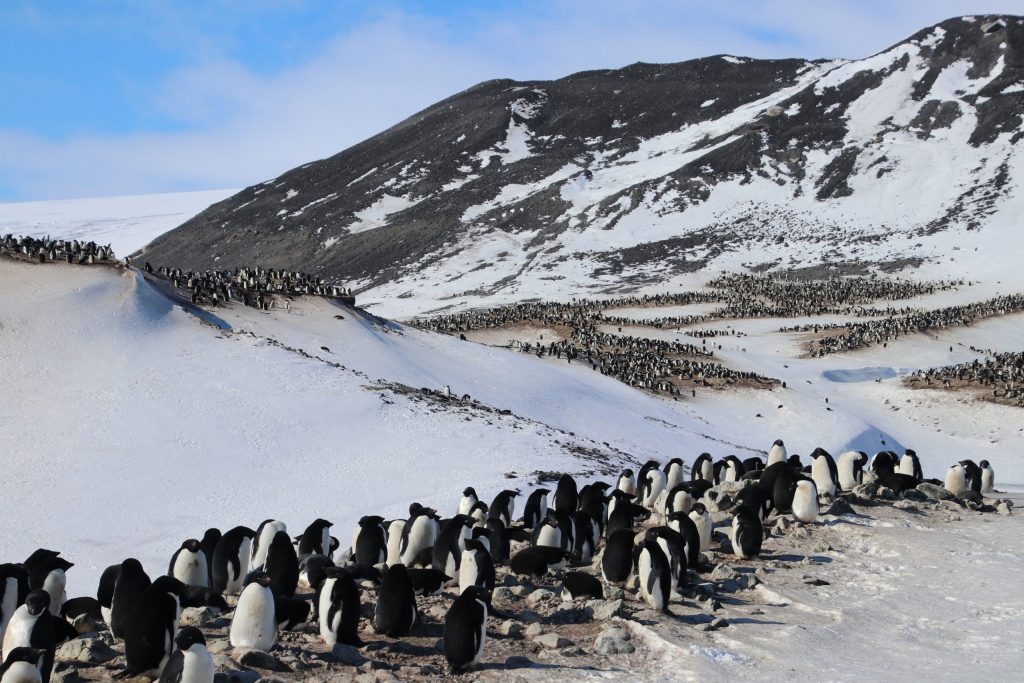
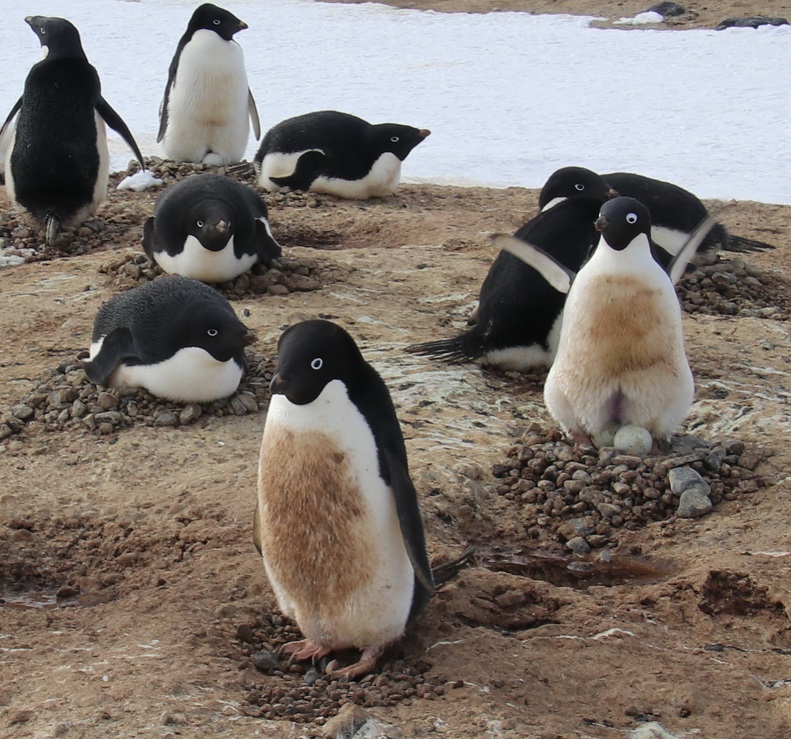
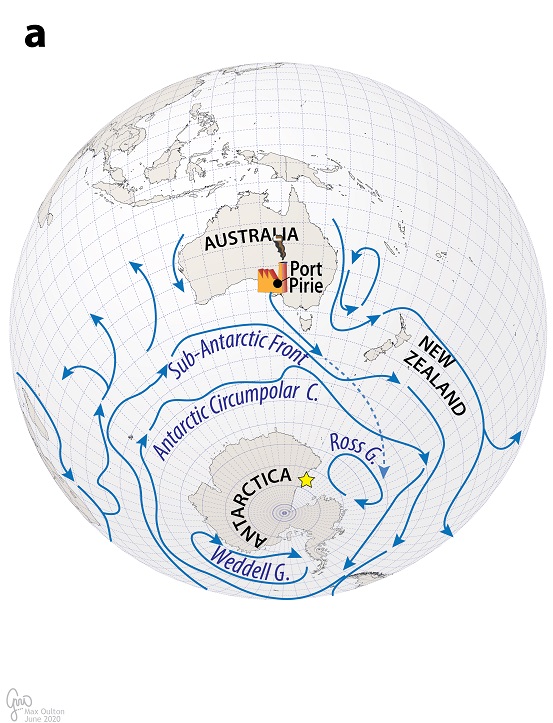
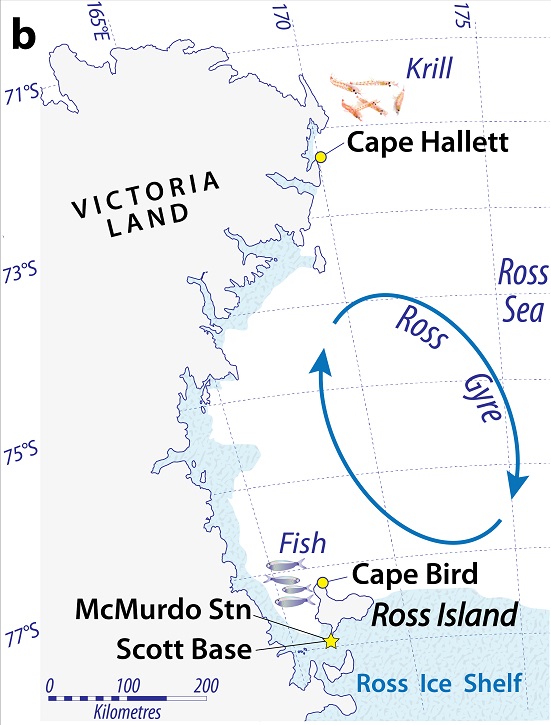
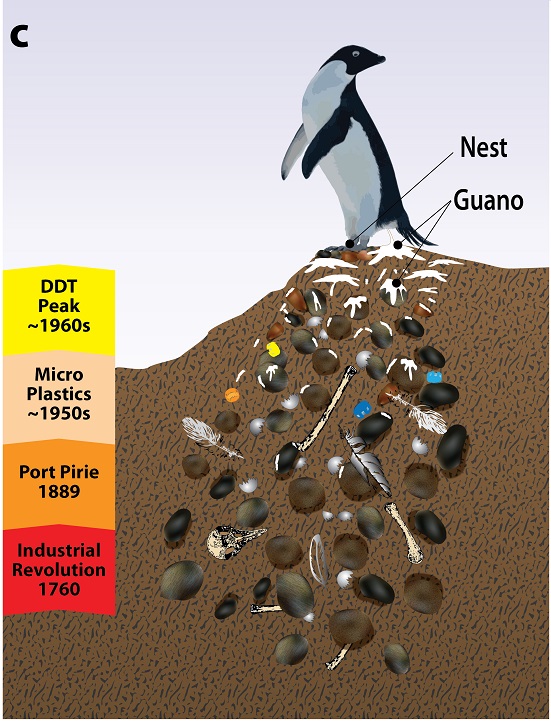
Schematic showing (a) Dominant ocean circulation patterns and potential long-range transport of contaminants to Antarctica (note Port Pirie, Australia, and Scott Base, McMurdo Station, star); (b) Ross Sea region, including Adélie penguin study sites at Cape Hallett (krill-dominated diet) and Cape Bird (fish-dominated diet); and (c) Representation of a penguin mound showing a timeline of examples of anthropogenic events and in-situ datable/analysable material. Copyright Max Oulton 2020